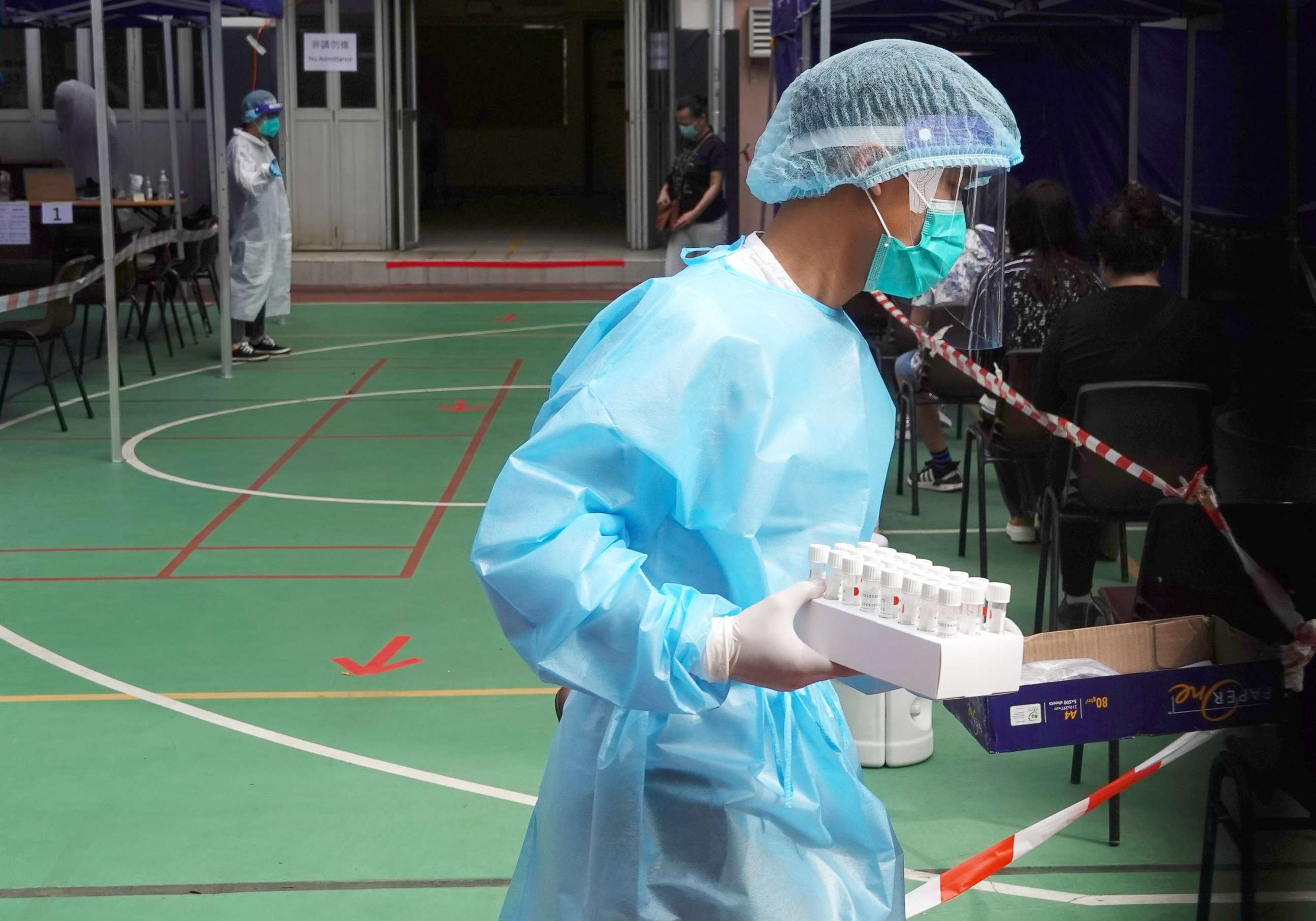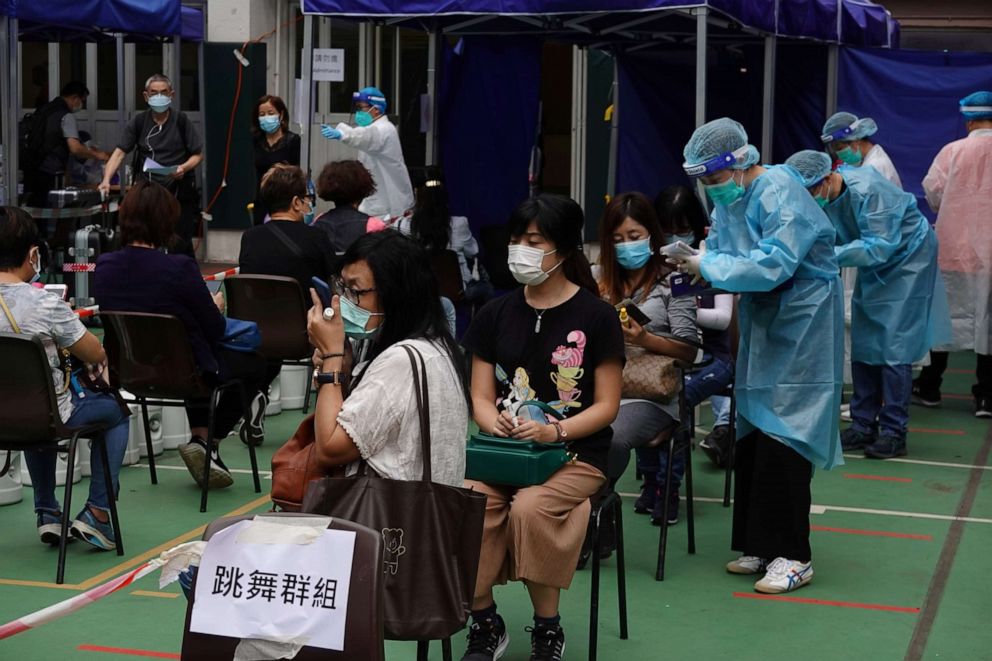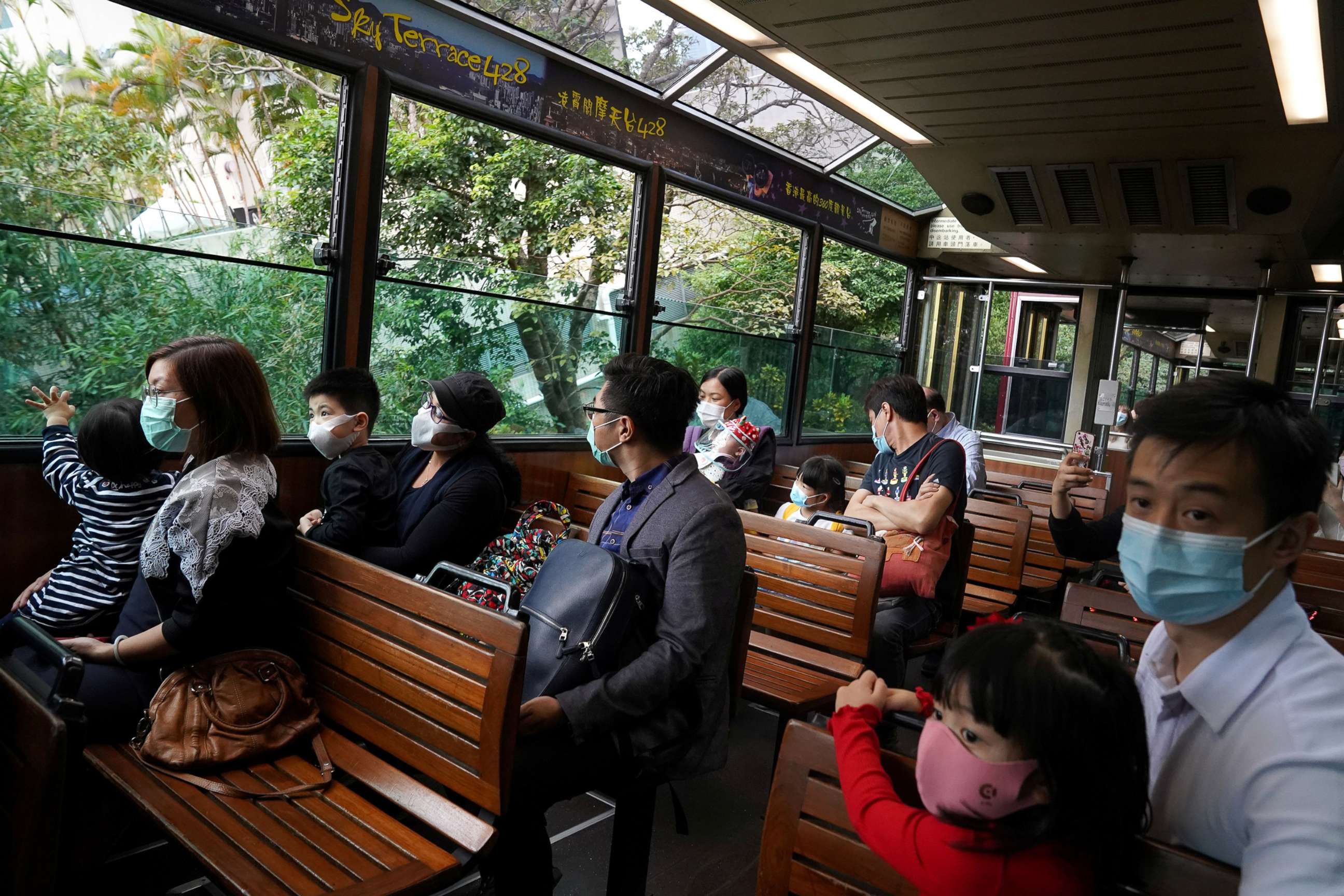East Asia’s coronavirus playbook: Reporter's notebook
The response spawned from the region's trauma from deadly outbreaks in the past.
HONG KONG -- For Hong Kongers, this pandemic year has brought on a deep feeling of deja vu.
In 2003, Severe Acute Respiratory Syndrome killed 774 of the 8,098 people it infected worldwide -- more than a third of those deaths were in Hong Kong.
My family lived in Hong Kong during the SARS epidemic. I was 16. I remember the city being plunged into panic following a devastating outbreak at a public housing estate. Caught by surprise, the public health system quickly became overwhelmed and many health workers were infected, eight of them died.
On the normally bustling streets, though, there was quiet. People retreated to their homes. Schools closed. Some families packed up and left. The tourism industry bled, and the economy was brought to its knees.
A memorial garden in Hong Kong Park, featuring bronze statues of the medics who died, pays testament to the indelible mark SARS left behind.
But the SARS legacy extends to everyday life. Elevator buttons are still covered in sterilized sheets of plastic, escalator handrails are regularly wiped down, airport temperature checks are a lasting fixture. SARS made the city cleaner and it invariably changed our behaviors towards disease.

So much so that in January, whispers of a mystery pneumonia across the mainland border were enough to ignite a profound collective response: mask wearing, strict personal hygiene and social distancing kicked in. The community, as a whole, showed that it was willing to do whatever was needed to avoid a SARS-like repeat. That meant listening to the experts and trusting the science.
Dr Gabriel Leung, dean of the medical faculty at Hong Kong University and a government adviser, describes the phenomenon as "social imprinting."
"SARS made us much more sensitive, receptive and now much more adherent to very serious interventions to control COVID-19."
It's fair to say that East Asia now has a playbook on how to tackle the coronavirus, one spawned from the region's trauma from deadly outbreaks in the past.
From the get-go, the strategy has been to aggressively test, trace and quarantine.
In this way, technology has a central role to play. For example, in Singapore and South Korea, contact tracers used cell phone location data to see if they've been exposed to confirmed cases. In some cases, tracing apps are required for entry into restaurants and public venues.
Most countries in Asia are closed to foreigners and have stringent quarantine controls because governments are, by design, making mobility difficult during the pandemic.
I got a taste of it in November, on board a near-empty 747 -- a surreal experience by any measure, almost spooky. Having had a whole row to myself for the 10-hour flight from Istanbul, I touched down in Hong Kong feeling well-rested.
But that's when it started -- a long, laborious process of entering Hong Kong during the pandemic. Straight out of the gate and it was four hours of waiting in queues, moving from station to station, registering information, processing QR codes and taking COVID-19 tests. Then an overnight hotel stay to wait for the results.

COVID-19 negative? A strict two-week quarantine at home is still mandatory. A tracking wristband attached to a government phone app will alert authorities if a person steps outside the parameters of their quarantine space. A call from the health department some days later follows. A second COVID-19 test on day 13. Breach it and face up to six months behind bars and fines as high as $2,200.
I returned to Hong Kong a week before the rules were tightened even further. Now every traveler must undergo their two-week quarantine at a hotel -- an expensive and mentally challenging undertaking.
And yes, the entire process is far from ideal or airtight, but there's absolutely no doubt it has helped keep infection levels relatively low for much of the year.
A caveat: as I write, it looks like Hong Kong is being hit by a fourth wave. Daily new cases have exceeded 80, a three-month high. In recent days, Japan and South Korea have also seen a spike in cases.
But these 'waves' are a far cry from the magnitude of the problem seen in the United States and Europe. Home to nearly 2 billion people, East Asia is responsible for less than one fifth of global COVID-19 infections.
Let me rewind to March 2020, when the spread of COVID-19 was starting to pick up speed at a worrying pace across Europe.

I'm standing shoulder-to-shoulder with passengers on London's Underground tube to Heathrow Airport. Social distancing is yet to become a defining 2020 buzz phrase and no one is wearing a mask.
At the airport, the touch screen at the self-check in kiosk is filthy. There's not a hand sanitizer dispenser in sight. The flight itself is also jam packed, and again, no one is wearing a mask.
It makes me wonder whether the legacy of this virus will have a similar social imprint on how the rest of the world behaves, just as SARS has on Hong Kong.
It's something I brought up during a recent chat with Dr John Brownstein, professor of medicine at the Harvard Medical School. He said: "This is potentially the SARS event for the U.S. where, again, people will have some memory, at least for some number of years, about what took place and what was needed to get a new emerging virus under control."




